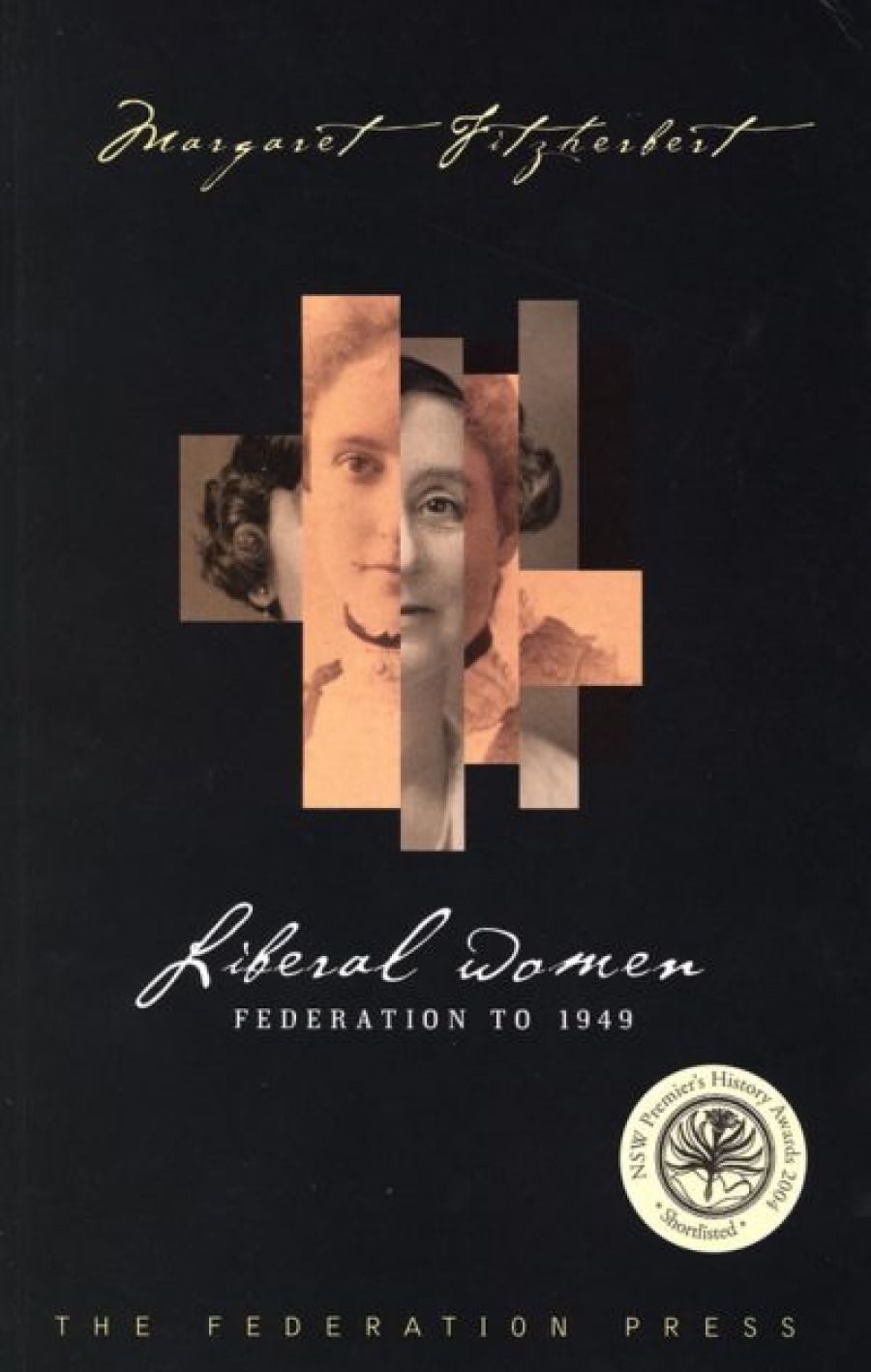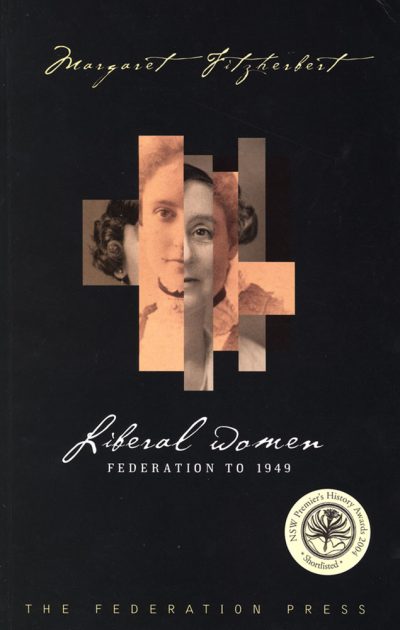
- Free Article: No
- Contents Category: Australian History
- Review Article: Yes
- Article Title: Hark Yakka
- Online Only: No
- Custom Highlight Text:
It has long been claimed that women were the backbone of the pre-World War II Australian Liberal Parties and a crucial strengthening agent for the new Liberal Party that Robert Menzies formed in 1945. Labor supporters said this was because women were conservative, easily led by their husbands, and didn’t understand much of the world outside the home. Liberals argued that it was just because they did understand the importance of domestic life that they supported the party best able to protect it. Margaret Fitzherbert has written the story of these Liberal women and, in so doing, has added to our knowledge both of the history of the Liberal party and of Australian women’s political activism.
- Book 1 Title: Liberal Women
- Book 1 Subtitle: Federation to 1949
- Book 1 Biblio: Federation Press, $39.95 pb, 305 pp
- Book 1 Cover Small (400 x 600):

- Book 1 Cover (800 x 1200):

For the first fifty years of the twentieth century, before the formation of the Liberal Party, Australian Liberal political organisations were fragmented along state lines, and their records are scattered and incomplete. Fitzherbert is to be congratulated on the hard archival yakka she has put into tracking down the evidence of the various state-based Liberal women’s organisations. She has retrieved lives and stories from these archives, and told them in lively, readable prose. She has included a number of short biographies of prominent Liberal women from the first half of the century, giving organisers such as Eleanor Glencross their due, as well as better-known early women parliamentary representatives such as Edith Cowan and Enid Lyons.
Australian politics is so determinedly polarised around the ALP and the Liberal Party that it is likely that this book will be read only as telling the story of Liberal women. The launch by Amanda Vanstone, in the Victorian Parliament’s Queen’s Hall, was certainly a tribal affair. But the book tells us as much about middleclass women’s political activism in the first half of the twentieth century as it does about specifically Liberal women. The way the Liberal women did their politics, through personal networks, public speaking, petitions and letters to the paper, was shared with other women’s political organisations, as was their belief in the importance of women exercising their political rights, and many of their policy aims. Equal pay for equal work, women’s rights over property and children in divorce settlements, inheritance laws, issues of women’s and children’s health were also concerns of organisations such as the NSW Women’s Political Education League and the Victorian Women’s Political Association. Marilyn Lake discussed such organisations in Getting Equal (1999), arguing that they bore a feminist non-party ideal, and she deliberately excluded organisations such as the AWNL with their strong party links. Fitzherbert’s work shows how much women’s organisations shared in the period, but like Lake she has limited her gaze and so failed to put the stories she tells into the broader context of middleclass women’s political activism. This is a pity, as it keeps our political history in the narrow tracks of our contemporary politics.


Comments powered by CComment